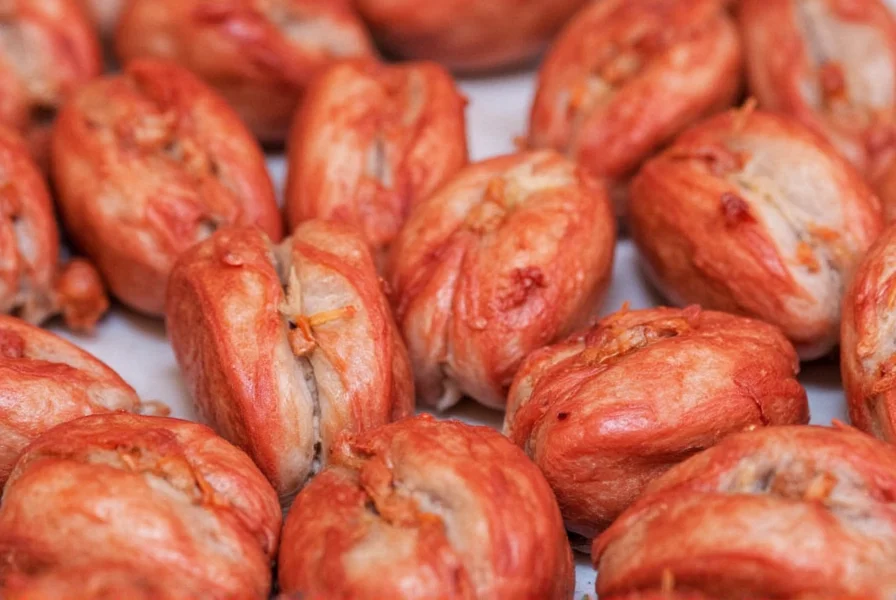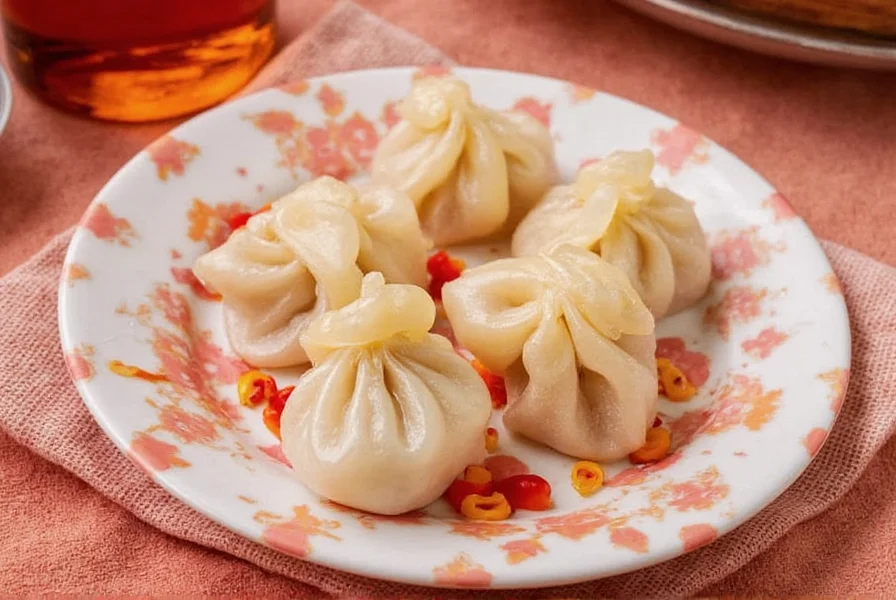When exploring the relationship between red ginger and dim sum, it's essential to clarify culinary terminology and traditions. Many searchers confuse “red ginger” with standard ginger usage in Chinese cuisine, creating misconceptions about authentic dim sum preparation.
Understanding Ginger Varieties in Chinese Cuisine
Ginger appears in multiple forms across Asian cooking, but not all varieties serve the same purpose in dim sum:
| Ginger Type | Characteristics | Dim Sum Usage |
|---|---|---|
| Fresh Ginger Root | Yellowish-brown skin, fibrous texture, pungent aroma | Essential in dumpling fillings, soup bases, and marinades |
| Pickled Ginger (Red/Pink) | Young ginger preserved in vinegar/sugar, develops pink hue | Rarely used in traditional dim sum; more common with sushi |
| Candied Ginger | Cooked in sugar syrup, chewy texture, sweet-spicy flavor | Occasionally in dessert dim sum like ginger steamed buns |
The Role of Ginger in Authentic Dim Sum
Traditional Cantonese dim sum relies on fresh ginger's aromatic properties rather than its color. Chefs mince or julienne ginger to:
- Enhance seafood fillings in har gow (shrimp dumplings)
- Balance richness in char siu bao (barbecue pork buns)
- Add complexity to soup bases for wonton noodle dishes
- Counteract fishiness in various seafood preparations
Ginger's enzymatic properties also help tenderize proteins in dim sum fillings—a functional benefit beyond flavor. The rhizome's volatile oils contain zingiberene and other compounds that create that distinctive warm, spicy note essential to Cantonese cuisine.

Why the Red Ginger Confusion Persists
The misconception about red ginger in dim sum likely stems from several factors:
- Sushi association: Western diners often encounter pink pickled ginger at Asian restaurants and assume it's universal across all Asian cuisines
- Color terminology: Some refer to mature ginger's pinkish root tips as “red ginger” despite it being standard ginger
- Fusion cuisine: Modern restaurants sometimes incorporate sushi-style pickled ginger as a garnish with dim sum
- Ingredient substitution: Home cooks may use available pickled ginger when fresh isn't accessible
Historical records of traditional dim sum from Guangdong province show no evidence of pickled ginger being incorporated into classic recipes. The Cantonese culinary tradition emphasizes fresh ingredients prepared at their peak, with ginger used in its raw form for maximum aromatic impact.
When Pickled Ginger Appears with Dim Sum
While not part of the dim sum itself, some contemporary restaurants serve pickled ginger alongside dim sum for specific purposes:
- Palate cleanser: Between rich dishes like siu mai or char siu bao
- Digestive aid: Ginger's traditional medicinal properties support digestion
- Visual contrast: The pink color provides aesthetic appeal against neutral dim sum
This practice represents modern adaptation rather than historical tradition. Authentic teahouse dim sum service in Guangzhou typically offers only tea and perhaps preserved fruits as accompaniments.
Using Ginger Properly in Homemade Dim Sum
For those preparing dim sum at home, proper ginger usage makes a significant difference:
- Select firm, smooth-skinned ginger with no wrinkles
- Peel only when necessary—young ginger often doesn't require peeling
- Julienne for visual appeal in translucent dumplings like har gow
- Mince finely for meat-based fillings to distribute flavor evenly
- Use ginger water (ginger steeped in hot water) for delicate doughs
Professional dim sum chefs often freeze ginger before grating to achieve a finer texture that integrates better with fillings. The amount used varies by dish—seafood preparations typically contain more ginger than pork or vegetable fillings.
Regional Variations and Modern Interpretations
While traditional Cantonese dim sum avoids pickled ginger, some regional variations incorporate ginger differently:
- Shanghai-style: May include ginger in vinegar dipping sauces
- Sichuan dim sum: Sometimes features ginger in spicy oil preparations
- Fusion restaurants: Creative chefs might add pickled ginger to dumpling fillings
These represent culinary evolution rather than established tradition. When evaluating whether a dish qualifies as authentic dim sum, the preparation method and ingredient authenticity matter more than modern interpretations.
Practical Tips for Dim Sum Enthusiasts
Understanding ginger's role enhances your dim sum experience:
- Ask about ginger content if you have sensitivities—it's nearly ubiquitous
- Request less ginger if preferred, though this may alter traditional flavor balance
- Try ginger tea alongside dim sum for authentic digestive pairing
- Examine fillings—visible ginger threads indicate traditional preparation
When preparing dim sum at home, remember that ginger quality directly impacts final flavor. Fresh ginger should smell bright and citrusy, not musty or dry. Store unpeeled ginger in a paper bag in the refrigerator for up to three weeks, or freeze for longer storage without significant quality loss.
Frequently Asked Questions
Is red ginger used in traditional dim sum recipes?
No, traditional dim sum recipes use fresh ginger root, not red or pickled ginger. What's commonly called red ginger is young ginger pickled in vinegar, which turns pink and is primarily served with sushi. Authentic Cantonese dim sum relies on fresh ginger's aromatic properties in fillings and broths.
Can I substitute pickled ginger for fresh ginger in dim sum?
While possible, substitution significantly alters flavor and texture. Pickled ginger adds vinegar sweetness that doesn't replicate fresh ginger's bright, spicy notes essential to dim sum. For authentic results, use fresh ginger. If substituting, reduce quantity by half and omit additional vinegar from the recipe.
Why do some restaurants serve pink ginger with dim sum?
Some modern or fusion restaurants serve pickled ginger as a palate cleanser between rich dim sum dishes, similar to how it's used with sushi. This practice represents contemporary adaptation rather than traditional Cantonese dim sum service, which typically offers only tea as an accompaniment.
What dim sum dishes contain the most ginger?
Seafood-based dim sum typically contains the most ginger, particularly har gow (shrimp dumplings) and fish-filled varieties. Ginger helps counteract fishiness while enhancing flavor. Meat-based dim sum like siu mai and char siu bao also contain noticeable ginger, though usually in smaller quantities than seafood preparations.
How should I store ginger for making dim sum at home?
Store unpeeled ginger in a paper bag in the refrigerator's vegetable drawer for up to three weeks. For longer storage, freeze whole or sliced ginger in an airtight container—frozen ginger can be grated directly without thawing. Avoid plastic bags, which trap moisture and accelerate spoilage.











 浙公网安备
33010002000092号
浙公网安备
33010002000092号 浙B2-20120091-4
浙B2-20120091-4